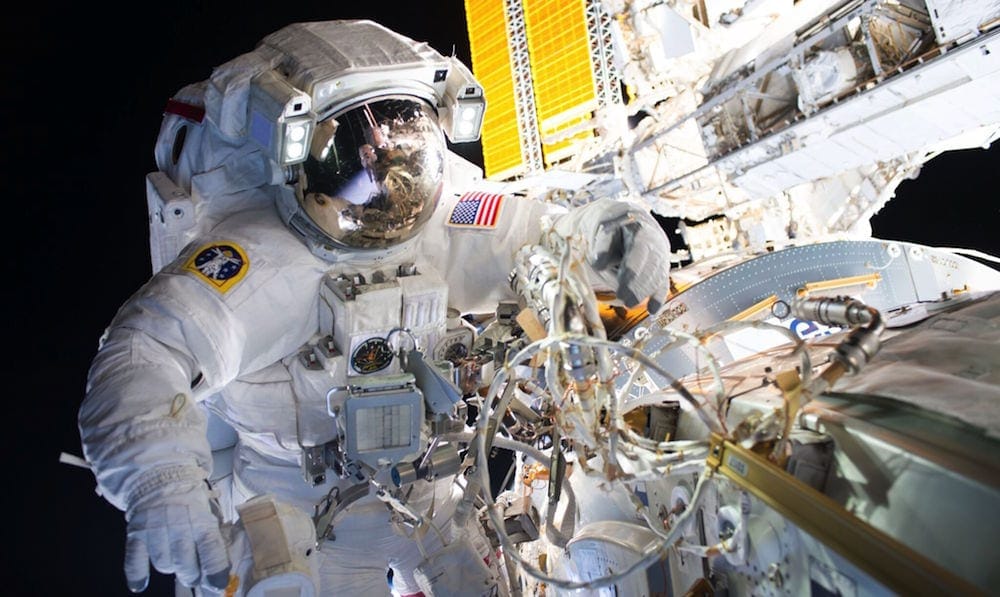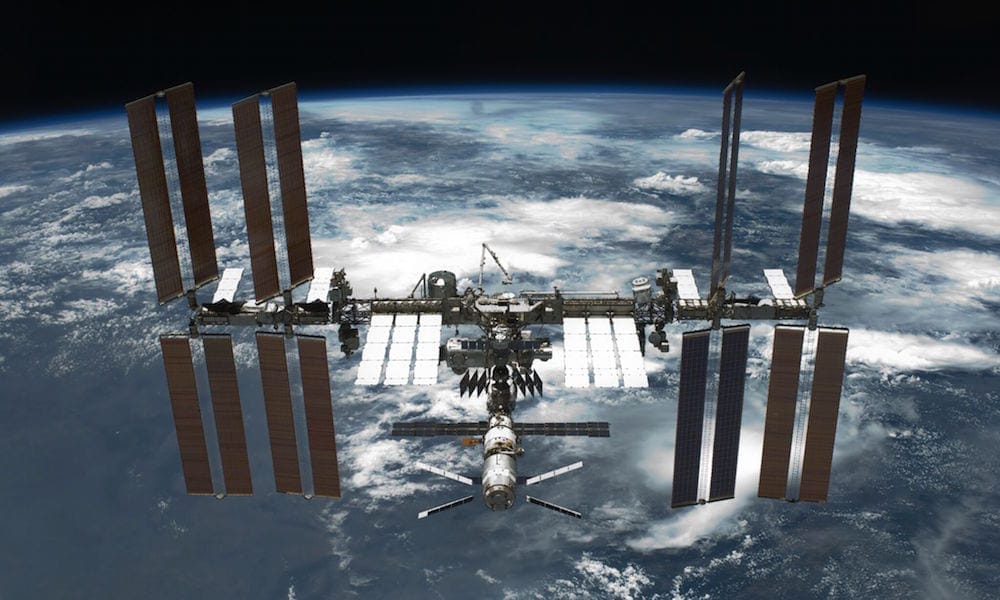Have you ever wished upon a shooting star? Chances are that shooting star was the International Space Station (ISS) whizzing past. The International Space Station has been orbiting the Earth since 1998 and it can often be seen passing overhead if you know when and where to look for it. Our ‘Kids Guide to the International Space Station’ tells you how to find out the best time to see it, and what life is like for the astronauts on board.

Image credit: NASA Image Gallery
What is the International Space Station?
The International Space Station is the largest spacecraft orbiting the Earth. It is staffed by a crew of six astronauts who live and work on board the International Space Station for six to 18 months at a time. It’s been visited by astronauts from 18 different countries and was built by a team of space agencies from around the world.
You don’t need a telescope to see the International Space Station – its solar panels reflect the light of the sun so it’s clearly visible, just like the moon – or like that shooting star.
When Can I see the International Space Station?
The best time to see the International Space Station is … when it’s passing overhead! The International Space Station circles the Earth every 90 minutes, but because of the Earth’s rotation you won’t see it everyday, or when it’s daylight.
The best times are shortly before sunrise or just after dusk when the sky is darker. You can find out exactly when it will be near you by clicking this NASA link.
The space station is visible for an 80km radius around each city, so if yours isn’t listed pick the one nearest to you.

Image credit: NASA Image Gallery
Fun Facts about the International Space Station
- The ISS has a wingspan wider than a Boeing 777’s
- It’s the length of an American Football Field (well, almost: an American football field is 110m long and the International Space Station is 109 metres)
- It weighs as much as 450 cars
- There are two bathrooms, a gym, and as much living space as a six bedroom house on board
- An acre of solar panels provides the power for its day-to-day running
- It travels at 28,000 km/hour, orbiting approximately 400km above the earth
- The International Space Station is nothing like the Millennium Falcon

Image credit: NASA Image Gallery
Life Aboard the International Space Station
There is no gravity in space so astronauts are always floating, but they only wear spacesuits when they go outside for a spacewalk. Inside they can wear their everyday clothes and breathe the air normally as we do. They also have regular mealtimes with the same foods we would eat on Earth, but imagine the fun of having to catch your food as it floats past. Life is different for astronauts in many ways:
- In one day an astronaut on the International Space Station will see 16 sunrises and 16 sunsets around the world
- There is no way to do laundry on board – astronauts have to pack a lot of clean undies
- There are no sinks or showers either – astronauts have to wipe themselves clean with wet-wipes and ‘wash’ their hair with dry shampoo – water doesn’t flow in space
- And there are no arguments over the dishes – food is eaten straight out of the container, then the container is crushed and brought back to Earth with the rubbish
- When an astronaut goes to the toilet they have to fasten themselves to the seat, and the waste is vacuumed away (but wee is purified and recycled)
- At bedtime astronauts strap themselves into into sleeping bags so they don’t ‘drift away’ in their sleep
- Once a week astronauts can call their families on Earth and video chat, and they receive regular space pods with mail and visiting astronauts
- Astronauts entertain themselves with books, music, exercise, DVDs – and by taking lots of photographs of the Earth
Where Do I Find Out More?
Want to know where the Space Station was when you were born? Find out by entering any date and time since its launch here: isstracker.com/historical
Don’t forget to share this article with friends and family so they can see the International Space Station too!
Other articles you might enjoy

People first went to the moon in 1969. Find out some interesting facts in our article about the first moon landing. Or why not check out our Super Moon Guide.
You can find lots more interesting articles under our Science & Technology tab.


That’s fascinating. I can’t believe they spend 6-18 months up there. How tough for their family!
Where do I sign up? I mean … right. Very difficult 😉